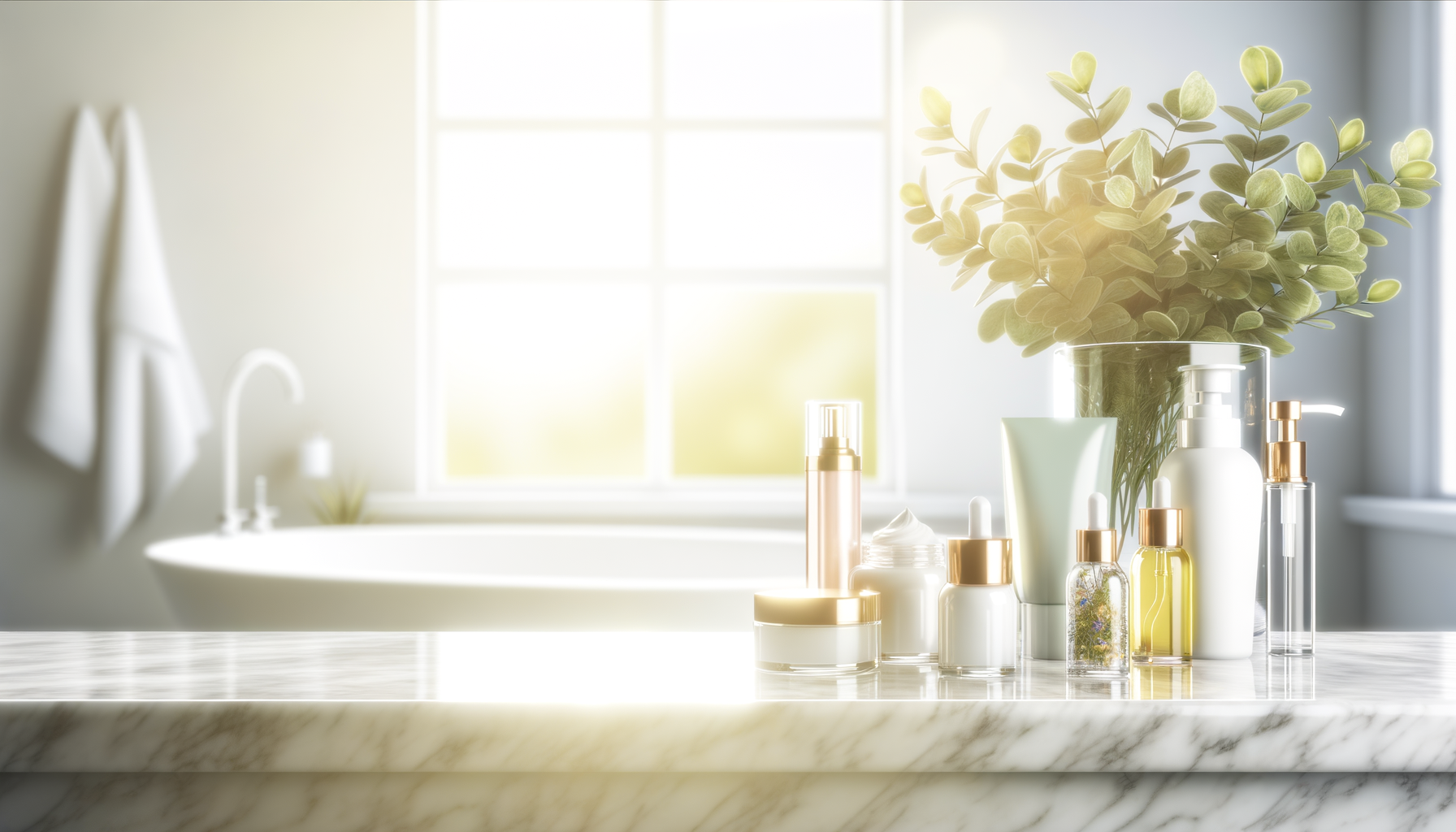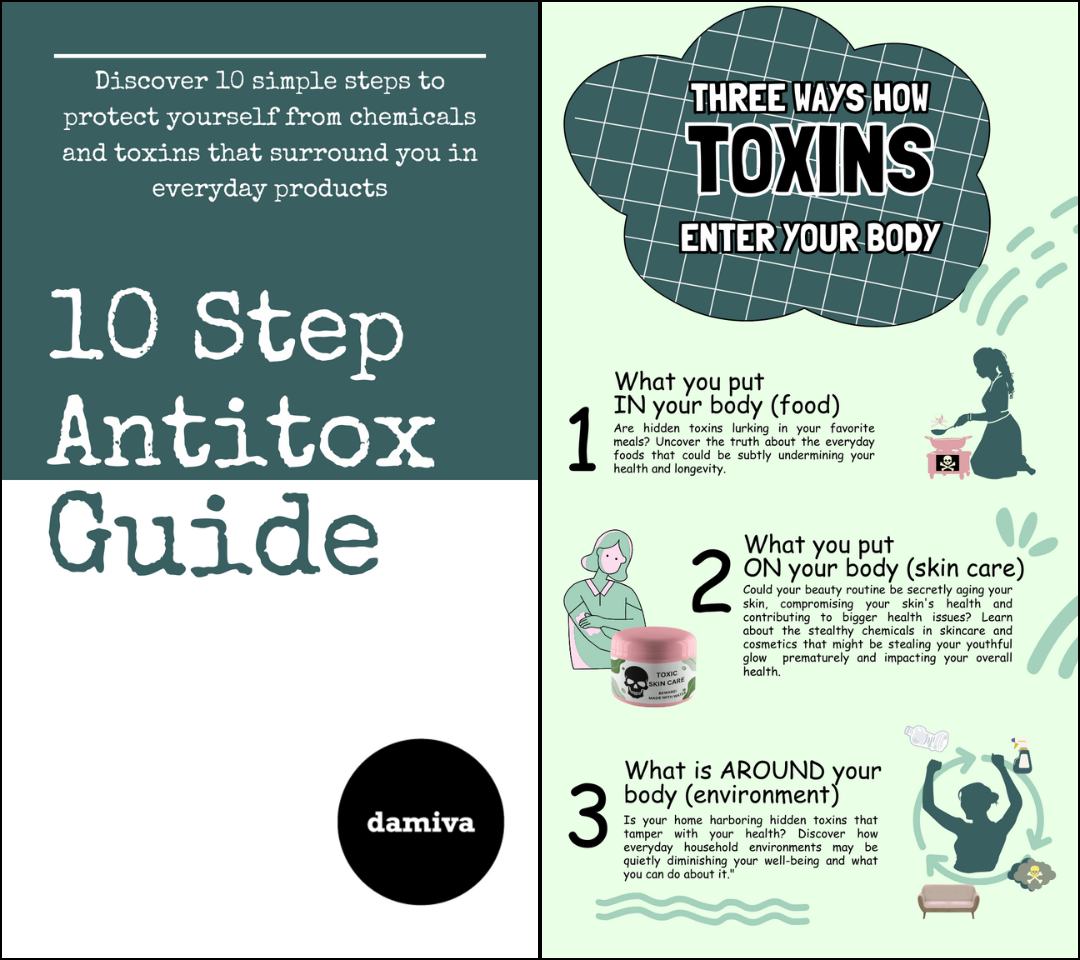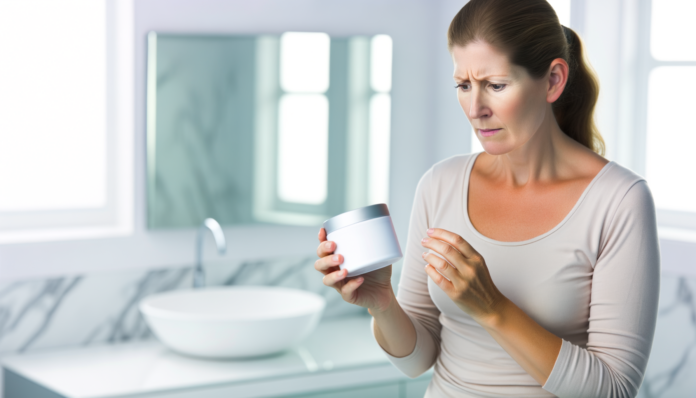Introduction
Overview of the Issue
Talc, a naturally occurring mineral, has been a staple in various consumer products for decades, most notably in baby powders. Its ability to absorb moisture and reduce friction has made it a popular choice for maintaining dry and smooth skin. However, the safety of talc-based products has come under intense scrutiny due to potential contamination with asbestos, a known carcinogen. This concern has led to numerous lawsuits and scientific investigations, particularly focusing on the potential link between talc use and cancer, including breast cancer.
Why This Topic Matters
The potential health risks associated with talc-based products are not just a matter of scientific debate but a significant public health concern. Millions of people, including infants, have been exposed to talc through everyday products like baby powder. The implications of these exposures are profound, especially considering the severe health outcomes linked to asbestos contamination, such as ovarian cancer and mesothelioma. Moreover, the controversy surrounding talc has broader implications for consumer safety, corporate responsibility, and regulatory oversight. Understanding the risks associated with talc is crucial for making informed decisions about personal care products and advocating for safer alternatives.
Purpose of the Article
This article aims to provide a comprehensive overview of the ongoing debate surrounding talc and its potential link to breast cancer. We will delve into the nature of talc, its common uses, and the specific concerns related to its use in baby powder. By examining historical contexts, scientific studies, and regulatory stances, we hope to shed light on the complexities of this issue. Additionally, we will explore the known risk factors for breast cancer and evaluate the evidence linking talc to this disease. Finally, we will offer practical advice for consumers on how to identify talc in products, consider alternatives, and reduce exposure to potential toxins. Through this detailed exploration, we aim to empower readers with the knowledge needed to make proactive health choices and advocate for safer consumer products.

Do you have the most commonly used but toxic, disease bringing chemicals in your skin care? Many chemicals in skincare are hormone disruptors and make menopause symptoms worse.
Find out more…
Understanding Talc
What is Talc?
Talc is a naturally occurring mineral composed primarily of magnesium, silicon, and oxygen. Known for its softness, talc has a smooth, silky texture and is often white or off-white in color. This mineral is mined from the earth and then processed to remove impurities, making it suitable for various industrial and consumer applications. Talc’s unique properties, such as its ability to absorb moisture and reduce friction, make it a valuable ingredient in many products.
Common Uses of Talc
Talc is utilized in a wide range of products across different industries. Some of its common uses include:
- Cosmetics: Talc is a key ingredient in many cosmetic products, including face powders, blushes, and eye shadows, due to its ability to provide a smooth finish and absorb excess oil.
- Pharmaceuticals: In the pharmaceutical industry, talc is used as a filler in tablets and as a dusting powder to prevent pills from sticking together.
- Food: Talc is sometimes used as an anti-caking agent in food products, helping to keep powdered substances free-flowing.
- Industrial Applications: Talc is used in the manufacturing of ceramics, paint, paper, and plastics, where it serves as a filler and improves the properties of the final product.
Talc in Baby Powder
One of the most well-known uses of talc is in baby powder. For decades, talc-based baby powder has been a staple in many households, prized for its ability to keep skin dry and prevent diaper rash. The product is applied to the skin to absorb moisture, reduce friction, and provide a soothing effect.
However, the use of talc in baby powder has come under scrutiny due to potential health concerns. Some studies have suggested a link between the use of talc-based baby powder in the genital area and an increased risk of ovarian cancer. This has led to significant public debate and legal actions against manufacturers, most notably Johnson & Johnson. In response to these concerns, many companies have shifted to using cornstarch as an alternative to talc in their baby powder products.
Despite the controversy, talc continues to be used in various other products, and its safety remains a topic of ongoing research and regulatory review.

Popular Read: Endocrine Disruptors in Skincare: What You Need to Know
Talc and Health Concerns
Historical Context of Talc Safety
Talc, a naturally occurring mineral, has been used for centuries in various applications, including cosmetics and personal care products. Its ability to absorb moisture and reduce friction made it a popular ingredient in baby powders and other products. However, concerns about the safety of talc, particularly its potential contamination with asbestos, have been raised since the 1970s. Asbestos, a known carcinogen, is often found in close proximity to talc deposits, leading to fears that talc products could be contaminated. In 1976, the Cosmetic, Toiletry, and Fragrance Association (CTFA) issued guidelines stating that all talc used in cosmetic products in the U.S. should be free of detectable amounts of asbestos. Despite these guidelines, the debate over the safety of talc has persisted, fueled by ongoing scientific studies and legal battles.
Scientific Studies on Talc and Cancer
The relationship between talc and cancer has been the subject of numerous scientific studies, with mixed results. Research has primarily focused on two types of cancer: ovarian cancer and lung cancer.
1. **Ovarian Cancer**: Several studies have investigated the potential link between the use of talcum powder in the genital area and ovarian cancer. Some studies, such as those by Cramer et al. (2016) and Terry et al. (2013), have suggested a slight increase in risk, while others, including a large study published in JAMA (2020), found no significant association. The inconsistency in findings may be due to differences in study design, population, and potential recall bias.
2. **Lung Cancer**: The risk of lung cancer has been studied primarily in occupational settings, such as among talc miners and millers. Some studies, like those by Honda et al. (2002) and Coggiola et al. (2003), have indicated an increased risk of respiratory diseases, including lung cancer, among workers exposed to talc. However, it is challenging to isolate the effects of talc from other carcinogenic exposures, such as asbestos and radon, commonly found in mining environments.
3. **Other Cancers**: Research has also explored potential links between talc and other cancers, such as endometrial and stomach cancer. Studies like those by Karageorgi et al. (2010) and Neill et al. (2012) have shown mixed results, with some indicating a slight increase in risk and others finding no significant association.
Regulatory Stances on Talc
Regulatory agencies around the world have taken various stances on the safety of talc.
1. **International Agency for Research on Cancer (IARC)**: The IARC classifies talc containing asbestos as “carcinogenic to humans” (Group 1) and perineal use of talc-based body powder as “possibly carcinogenic to humans” (Group 2B).
2. **U.S. Food and Drug Administration (FDA)**: The FDA does not currently ban the use of talc in cosmetics but monitors the scientific literature and conducts its own research to assess potential risks. The FDA has also conducted surveys to test for asbestos contamination in talc products, with mixed results.
3. **National Toxicology Program (NTP)**: The NTP has not classified talc without asbestos as a carcinogen but continues to review emerging scientific evidence.
4. **European Union (EU)**: The EU has stricter regulations regarding the use of talc in cosmetics, requiring rigorous testing to ensure products are free from asbestos contamination.
In summary, while the historical context and scientific studies provide a complex picture of talc’s safety, regulatory stances reflect ongoing caution and the need for further research. Consumers are advised to stay informed and consider potential risks when using talc-based products.
Breast Cancer: Risks and Factors
Understanding Breast Cancer
Breast cancer is one of the most common cancers affecting women worldwide. It originates in the cells of the breast, typically in the ducts or lobules. The disease can be invasive, spreading to surrounding tissues, or non-invasive, remaining confined to its place of origin. Early detection through screening methods like mammograms significantly improves the chances of successful treatment. Symptoms may include lumps in the breast, changes in breast shape, dimpling of the skin, and discharge from the nipple.
Known Risk Factors
Several risk factors are associated with the development of breast cancer. These can be broadly categorized into genetic, lifestyle, and environmental factors:
- Genetic Factors: Mutations in genes such as BRCA1 and BRCA2 significantly increase the risk of breast cancer. A family history of breast cancer also elevates risk.
- Hormonal Factors: Prolonged exposure to estrogen, whether through early menstruation, late menopause, or hormone replacement therapy, can increase risk.
- Lifestyle Factors: Obesity, lack of physical activity, alcohol consumption, and smoking are known to contribute to breast cancer risk.
- Reproductive History: Having children later in life or not at all, and not breastfeeding, can also elevate risk.
- Age: The risk of breast cancer increases with age, particularly after the age of 50.
Potential Links to Talc
The potential link between talc and breast cancer is a subject of ongoing research and debate. Talc, a mineral used in various cosmetic and personal care products, has been scrutinized for its possible carcinogenic effects, particularly when used in the genital area.
Several studies have explored the association between talc use and ovarian cancer, but its link to breast cancer remains less clear. Some hypotheses suggest that talc particles could migrate through the reproductive tract to the ovaries, causing inflammation that might contribute to cancer development. However, the evidence is not conclusive.
A few studies have hinted at a possible connection between talc and breast cancer, but these findings are often confounded by other risk factors and biases. For instance, a study published in the Journal of Clinical Oncology in 2024 found a persistent positive association between genital talc use and ovarian cancer but did not find significant associations with breast cancer. This suggests that while talc may pose a risk for ovarian cancer, its impact on breast cancer is still uncertain.
In summary, while there is some concern about the potential carcinogenic effects of talc, particularly in relation to ovarian cancer, the evidence linking talc to breast cancer is not robust. More research is needed to clarify these potential risks and to provide definitive guidance for consumers.

Doubting chemicals in skincare and femcare? Well done! Choose chemical-free products whenever possible.
Evaluating the Evidence
Review of Key Studies
Numerous studies have investigated the potential link between talc use and cancer, particularly ovarian cancer. One of the most comprehensive analyses is a meta-analysis by Berge et al. (2018), which reviewed multiple studies and found a slight increase in ovarian cancer risk among women who used talc in the genital area. Similarly, a study by Cramer et al. (2016) also suggested an association between genital talc use and ovarian cancer, particularly among long-term users.
Another significant study is the Sister Study, led by O’Brien et al. (2024), which included detailed data on women’s use of intimate care products over their lifetimes. This study found a persistent positive association between genital talc use and ovarian cancer, especially among frequent and long-term users. However, it did not find significant associations between talc use and other hormone-related cancers like breast or uterine cancer.
Conflicting Findings
Despite these findings, the evidence is not unanimous. For instance, a large prospective study by Gertig et al. (2000) followed over 61,000 postmenopausal women and found no significant link between genital talc use and ovarian cancer. Similarly, a study by Houghton et al. (2014) also reported no association between talc use and ovarian cancer risk.
The conflicting results can be attributed to various factors, including differences in study design, sample size, and methods of data collection. Some studies rely on retrospective data, which can be prone to recall bias, where participants may not accurately remember or report their past talc use. This inconsistency in findings has led to ongoing debates and calls for more rigorous research.
Expert Opinions
Experts are divided on the issue. The International Agency for Research on Cancer (IARC) classifies the perineal use of talc-based body powder as “possibly carcinogenic to humans,” but it also notes that the evidence is limited and not conclusive. The American Cancer Society (ACS) states that while some studies suggest a possible link, the overall evidence is not strong enough to confirm that talc use causes ovarian cancer.
Dr. Katie O’Brien, a lead researcher in the Sister Study, emphasizes the need for caution. “Despite challenges in assessing exposure history and biases inherent in retrospective data, our findings are robust, showing a consistent association between genital talc use and ovarian cancer,” she notes. On the other hand, Dr. Daniel Cramer, who has conducted extensive research on this topic, advocates for warning labels on talc products to inform consumers of the potential risks.
In summary, while some studies and experts suggest a potential link between talc use and ovarian cancer, the evidence is not definitive. The scientific community continues to call for more comprehensive and methodologically sound research to resolve these conflicting findings and provide clearer guidance to consumers.
Do you know the 3 main ways how your body is exposed to harmful chemicals, which affect your hormones, your thyroid, health and beauty?
If not, it may be time to learn about them. It takes about 1-2 minutes.
We have a few suggestions how to avoid these silent health and immune system killers in our new guide.

Practical Advice for Consumers
How to Identify Talc in Products
Identifying talc in products can be straightforward if you know what to look for. Talc is often listed as an ingredient in various personal care and cosmetic products. Here are some tips to help you identify talc:
- Read the Ingredient List: Look for terms like “talc,” “talcum powder,” or “magnesium silicate” on the ingredient list of the product packaging.
- Check Product Labels: Some products may explicitly state “talc-free” on their labels, which can help you avoid talc-based products.
- Research Online: If the ingredient list is not clear, you can often find detailed product information on the manufacturer’s website or other reliable sources online.
Alternatives to Talc-Based Products
If you are concerned about the potential risks associated with talc, there are several alternatives available that can provide similar benefits without the associated health concerns:
- Cornstarch-Based Powders: Cornstarch is a popular alternative to talc in baby powders and body powders. It is effective at absorbing moisture and is generally considered safe.
- Arrowroot Powder: This natural powder is another excellent alternative that can be used in place of talc. It is often found in natural and organic personal care products.
- Baking Soda: Baking soda can be used as a deodorant and moisture absorber. It is a versatile and safe alternative to talc.
- Oat Flour: Oat flour is gentle on the skin and can be used in various personal care products as a soothing and absorbent ingredient.
Tips for Reducing Exposure to Potential Toxins
Reducing your exposure to potential toxins, including talc, involves making informed choices about the products you use and adopting safer practices. Here are some tips to help you minimize your exposure:
- Choose Natural and Organic Products: Opt for products that use natural and organic ingredients. These products are less likely to contain harmful chemicals and toxins.
- Be a Label Reader: Always read the ingredient list on product labels. Familiarize yourself with common toxic ingredients and avoid products that contain them.
- Use Fragrance-Free Products: Fragrances can contain a mix of chemicals, some of which may be harmful. Choose fragrance-free or naturally scented products to reduce your exposure to synthetic chemicals.
- DIY Personal Care Products: Consider making your own personal care products using safe, natural ingredients. There are many recipes available online for homemade deodorants, body powders, and skincare products.
- Stay Informed: Keep up-to-date with the latest research and recommendations from reputable health organizations regarding the safety of personal care products.
By taking these steps, you can make more informed choices and reduce your exposure to potential toxins, including talc, in your daily life.
Conclusion
Summary of Key Points
Throughout this article, we have delved into the complex relationship between talc and breast cancer, particularly focusing on the safety of talc-based baby powders. We began by understanding what talc is and its common uses, especially in baby powders. We then explored the historical context and scientific studies that have raised health concerns, including potential links to various cancers. Regulatory stances on talc have been mixed, with some agencies calling for more research while others have issued warnings. We also examined the known risk factors for breast cancer and how talc might fit into this picture. Finally, we reviewed key studies, conflicting findings, and expert opinions to provide a balanced view of the evidence.
Final Thoughts on Talc and Breast Cancer
The relationship between talc and breast cancer remains a topic of ongoing debate and research. While some studies suggest a potential link, particularly when talc is used in the genital area, other research has found no significant association. The International Agency for Research on Cancer (IARC) has classified genital use of talc-based body powder as “possibly carcinogenic to humans,” but this is not a definitive conclusion. Regulatory bodies like the FDA continue to monitor the situation, but as of now, there is no consensus that talc-based baby powders are a direct cause of breast cancer.
Encouragement for Proactive Health Choices
Given the mixed evidence and ongoing research, it is crucial for consumers to make informed decisions about their health. Here are some practical steps you can take:
- Read Labels: Always check the ingredient list on personal care products to identify the presence of talc.
- Consider Alternatives: Opt for talc-free products, such as those made with cornstarch, arrowroot powder, or other natural ingredients.
- Stay Informed: Keep up-to-date with the latest research and regulatory updates from trusted sources like the FDA and IARC.
- Consult Healthcare Providers: If you have concerns about talc use and cancer risk, discuss them with your healthcare provider for personalized advice.
In conclusion, while the debate over talc and breast cancer is far from settled, taking proactive steps can help mitigate potential risks. By staying informed and making cautious choices, you can better protect your health and well-being.









